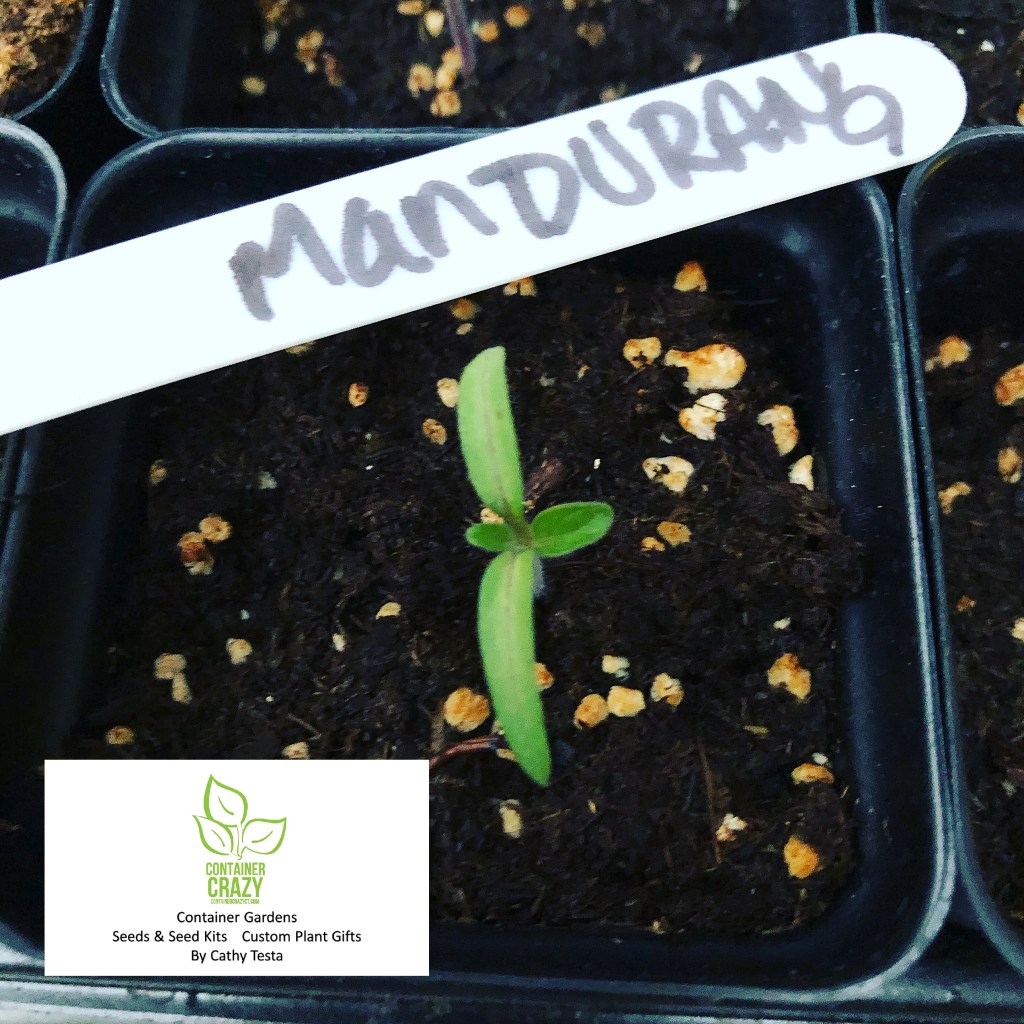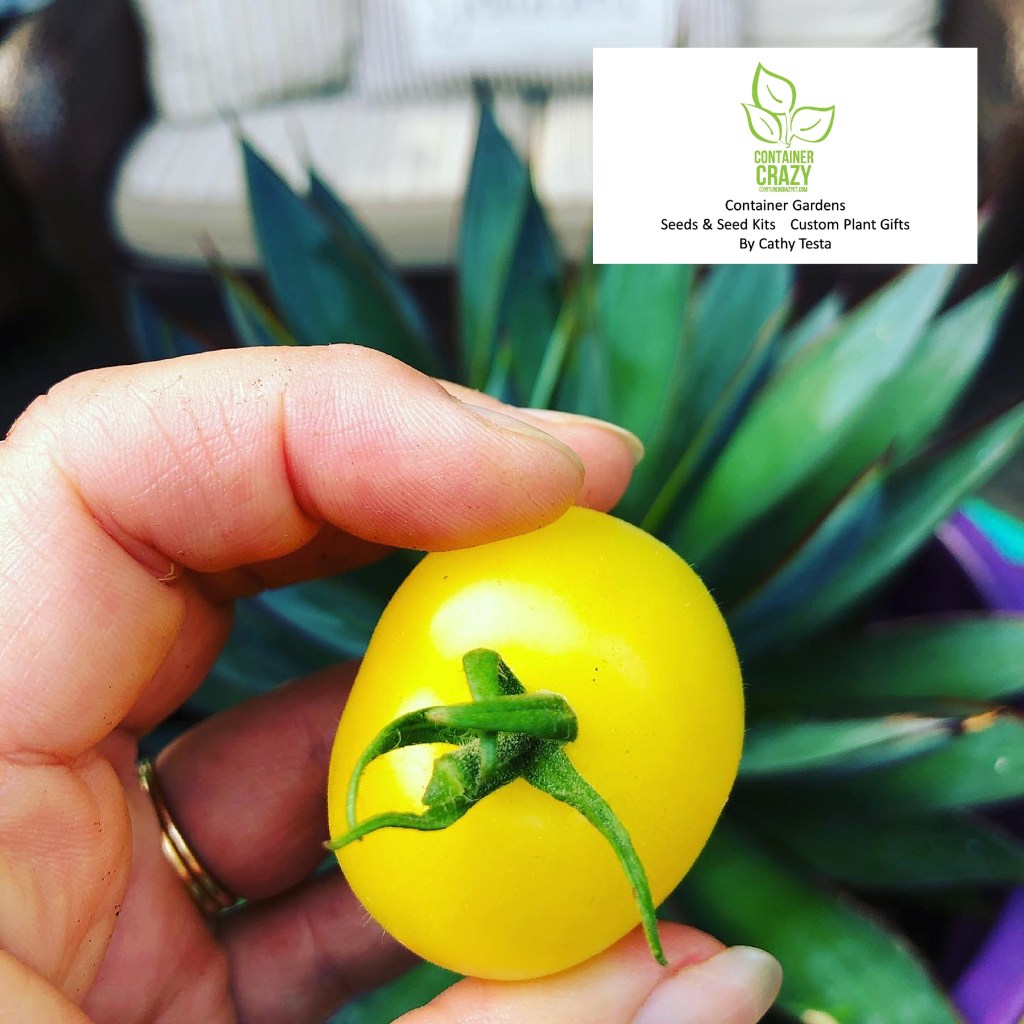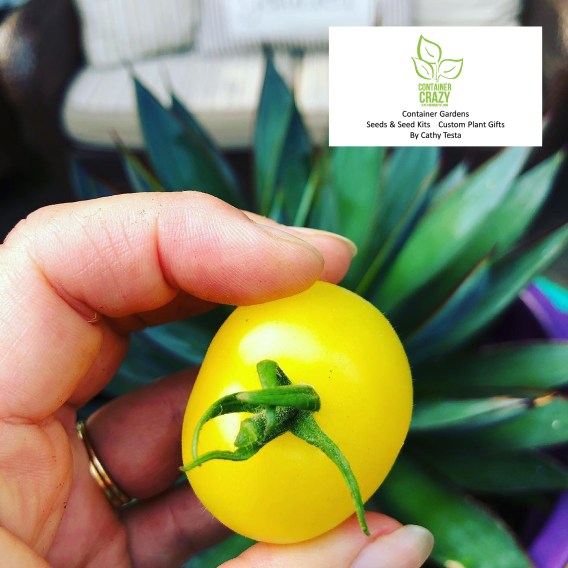Last season, I grew two types of dwarf tomatoes from seed. I was interested in dwarfs for a couple reasons, one being that dwarf tomato plants are well suited for growing in container gardens and patio pots and because I truly enjoy mixing up the types of tomatoes I grow.
Mandurang Moon Dwarf
Mandurang Moon Tomato was one dwarf I picked out. It has a dwarf habit which refers to the plant’s size (not the size of the tomatoes). It also grows a thicker stalk so it is a bit more solid and sturdy. And the tomato shape is round to oval, with a mild yellow to cream coloring. The size of the tomato fruit is larger than a cherry tomato, but not as large regular sized tomato. However, I had issues with starting them indoors from seed, and at first, I was miffed as to why.

SLOW TO NO GERMINATION
I grew them along with all my other types of tomato seeds. All were placed in the same type of seedling trays and set on seedling heat mats in the same environment in my greenhouse, and with same exact seedling potting mix. I wasn’t sure what went wrong, but I quickly noticed the Mandurang Moon tomato seeds were not germinating well. I had only a few which sprouted as compared to other tomato seeds I was starting.

THIS DWARF PLANT NEEDED MORE WARMTH
I took the seed packet back out of my files, and re-read the directions. A key aspect stood out. It says to “start seeds indoors in a warm location with plenty of light.” The “warm location” was key. Upon doing more research, I discovered warm could mean up to 80 degrees F. I can’t remember where I read that temperature, but I wrote it down in my notes so I would remember for this year, that these dwarfs may need a bit more paying attention to in regards to temperature and light as compared to the other types of tomatoes I grew from seed.

COLD TEMPERATURES WILL PREVENT GERMINATION
My greenhouse, which is a lean-to style, is not heated to 80 degrees in March or April when my seeds are typically started. It is more along the lines of a 55-60 degree F greenhouse because I would be homeless if I heated the greenhouse to higher temperatures. Heat costs are high, so I keep it to 55 to 60 degrees F.
However, on sunny days, the greenhouse temperature quickly rises to above 80 degrees F. It is like the tropics on sunny days, no doubt. Usually this flux of temperatures (55 degrees F on cloudy days to over 80 degrees F on sunny days) scenario is not a problem for starting seeds, but apparently, it could be an issue for this type of seed (as noted, it needs warmth). Most seeds germinate best in temperatures from 60 to 75 degrees F. And having a greenhouse offers abundant sunlight unless we have clouds all day, which contributes to the warm and light requirements.
CLOUDY DAYS OF WINTER
In the winter, we get many cloudy days. I started to consider the seeds did not germinate well because overall my greenhouse is not warm enough. And I don’t currently use grow lights. Usually all is fine with my tomato growing from seed with the sun’s rays through the greenhouse windows and roof, but in this case, it may have caused the slow germination to no germination issue and made this dwarf a bit more difficult to germinate from seed. Although not all was lost. By the way, when I start researching grow lights, I will share it here. Supplemental light, especially if growing indoors in the home, could be as easy as mounting a fluorescent light above the seedling trays. Adding grow light enhances all overall.
VIABLE SEEDS
I knew the seeds were fresh and not old, so it was not due to a potential viable issue. If seeds are not stored appropriately, this could be a problem for germination. And as far as light, well, I’ve been fine for years with the sunlight I receive in my greenhouse (on the sunny days), but overall, seedlings need light once they emerge from the soil. Otherwise, they may grow leggy, and the best scenario is about 14-16 hours of light. One of these days, I may invest in grow lights but the greenhouse natural light has worked for me for many many tomatoes.

NUTURED THOSE WHICH DID SPROUT
I did have some of the Mandurang Moon seed which sprouted, and I was very careful to nurture them since there were not many, and I planted them along with all my other tomato plants outdoors when the safe outdoor planting timing approached. And the dwarf Mandurang Moon did produce fruit and they were delicious. So not all was lost. The seeds for this dwarf are started early indoors. And transplanted outdoors when they are about 5″ tall.
TIMING IS 6 TO 8 WEEKS BEFORE FROST
The timing of when to sow this dwarf type is indicated at 6 to 8 weeks before your last frost date. That puts me in the March timeframe when it is still cold outdoors, but as noted, it often becomes a tropical oasis in my greenhouse on sunny days. However, I think what I will do this year is two things: Sow these seeds a bit later (closer to the 6 week date before frost date) and also I may just do a seedling tray inside the home to compare the differences. Will the fact my home is warmer than inside the greenhouse improve the germination rate and timing? We will see. Maybe I will have them germinate in the house and move them to the greenhouse when they get a few leaves growing so they will obtain ample sunlight to keep on growing. I will keep you posted! As far as the other dwarf I grew from seed, I will write about that one later!
Please, if you enjoyed this post, please comment and/or share any dwarf plants you grew in the tomato category. I’d love to hear if you have any tips to offer.
Thank you,
Cathy Testa
860-977-9473
containercathy@gmail.com

Except the cheese of course!


It’s always good to hear about plants doing well – especially after getting off to a slow start. You’re inspiring me to restart my tomato attempts!
Had you eaten those kind of tomatoes before you tried growing them to know that you like them?
Hi Scott D, No I did not eat them before and typically I don’t do a taste test prior. I just enjoy trying different types of tomatoes and I base it on a few factors: Interest (something unique about the plant/fruit), habits (indeterminate or determinate, good for containers or not), and also if it may have some disease resistance, things like that. I think basically if it perks my interest, and then I never regret trying new ones! I haven’t eaten a bad fresh tomato yet. Thanks, Cathy